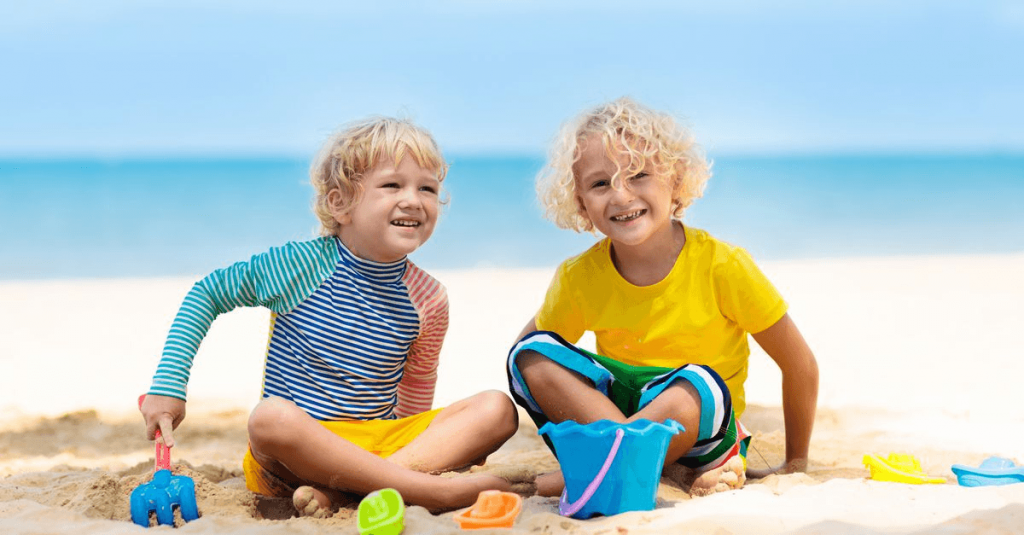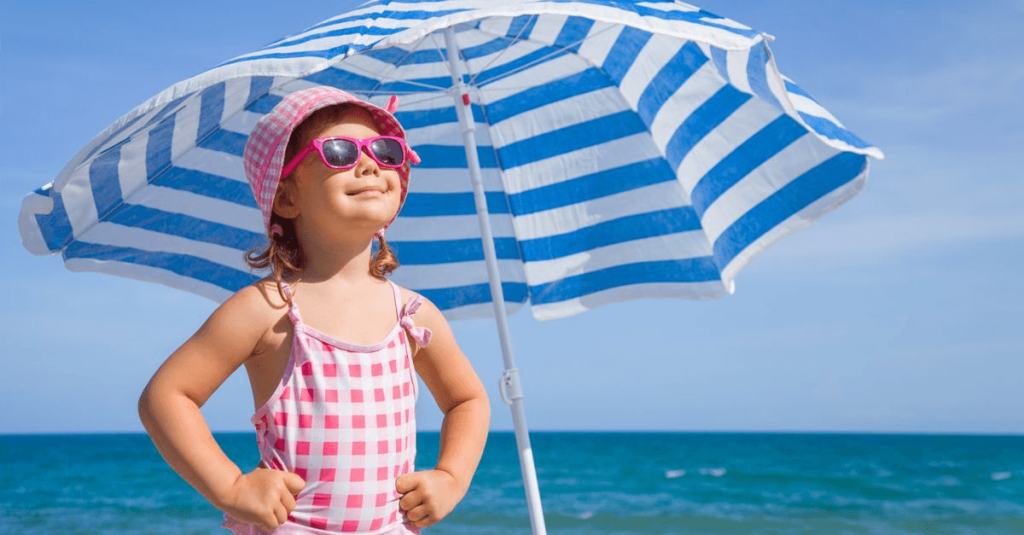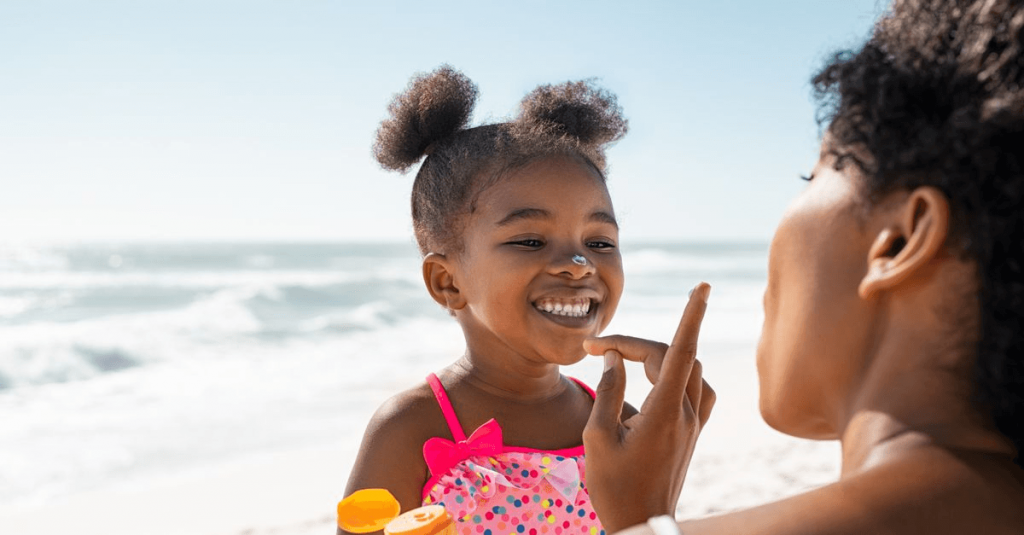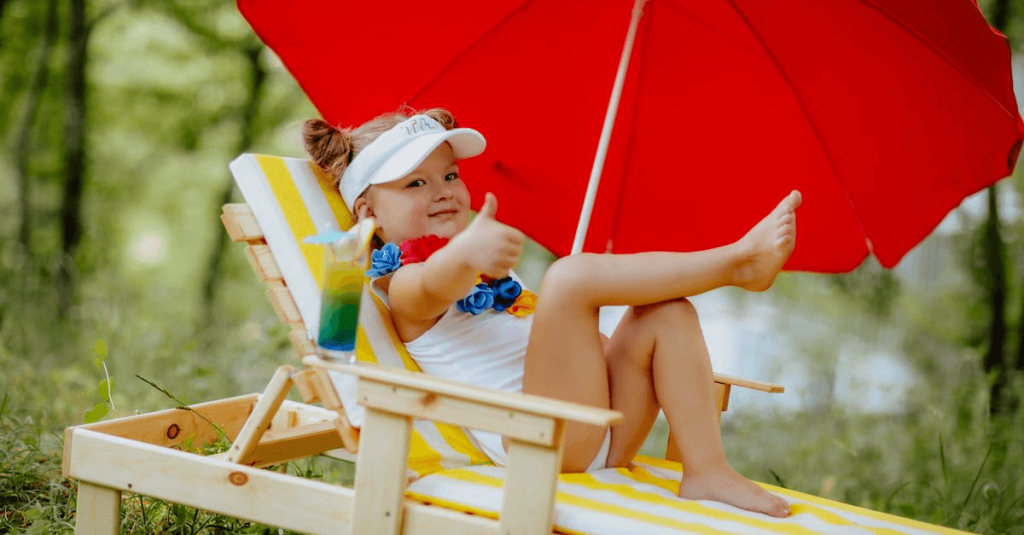A big idea of sun safety is UltraViolet (UV) radiation. UV radiation is a form of electromagnetic radiation that comes from the sun. These rays are invisible but they can still harm our skin. They also play a large part in causing skin cancer and put us at greater risk for cataracts.
Best Defenses Against UV Radiation
Timing. UV rays are at their strongest between 10 am and 2 pm, so whenever possible enjoy the outdoors in the early morning or late afternoon when the sun is lower in the sky.
Shade. UV radiation peaks about midday so if your family is out at that time, find shade or be sure to make your own. You can find a tree to eat under or set up a sun shelter like a tent or umbrella. It is extra important to keep infants in the shade because they lack the tanning pigments known as melanin which protect their skin.

Protective Clothing. When you know your family is going to be in the sun, be sure everyone is wearing protective clothing like wide brimmed hats. Shirts, shorts, and bathing suit cover-ups also provide the best UV ray protection and allow you to use less sunscreen.

Sunglasses. Good shades protect our eyes from UV radiation and decrease your risk of early cataracts and retinal damage. Children are more at risk for retinal damage from UV rays so wearing hats and sunglasses is even more important for children when they are out in the sun.
Sunscreen. It is important to use sunscreen on all skin that may be exposed to the sun. Sunscreen reduces the risk of burning and developing skin cancer, but be aware that some sunscreens can leave your family overexposed to damaging UV rays because they may break down in the sun or contain compounds that can impact your health.

Choose Your Sunscreen Wisely
What Not to Do
When looking for sunscreen, two ingredients to avoid are: oxybenzone and vitamin A.
- Oxybenzone is a synthetic estrogen that penetrates the skin and can disrupt the hormone system.
- Eating vitamin A-laden vegetables is good for you, but spreading vitamin A on your skin may not be. Studies show that tumors and lesions develop sooner on skin coated with creams laced with vitamin A, also called retinyl palmitate or retinol. It is best to avoid any skin or lip product whose label includes retinyl palmitate, retinol or vitamin A.
Don’t fall for high SPF labels. Anything higher than SPF 50+ can tempt you to let everyone stay in the sun too long. Even if they don’t burn, their skin may be damaged. Stick to SPFs between 15 and 50. Pick a product based on their skin coloration, how long you will be outside, how much shade is available, and how much cloud cover there is. And, reapply the sunscreen often!
Don’t use sunscreen that includes insect repellent. If bug repellent is needed, buy it separately and apply it first.
Don’t use the sprays. Sprays cloud the air with tiny particles that may not be safe to breathe.
What to Do
Look for zinc oxide and titanium dioxide on ingredient labels! These are two sunscreen ingredients we know enough about to consider safe BUT only use them in creams (no aerosols) and avoid nanoparticle versions (some sunscreens will say non-nano, that’s a good thing!). Our partners at Made Safe have more information on these ingredients.
Try to avoid sunscreens with the word “fragance”. Fragrance is a term often used to hide synthetic chemicals like phthalates that can harm children’s brain health.
Reapply cream often (we can’t stress that enough!). Sunscreen chemicals sometimes degrade in the sun, wash off, or rub off on towels and clothing.
Check out Environmental Working Group’s sunscreen database! EWG is a fabulous resource for finding a good sunscreen for you and your children. They rate the safety and efficacy of SPF-rated products, including hundreds of sunscreens for beach and sports use, SPF-rated moisturizers, and lip products. They give high ratings to brands that provide broad spectrum, long-lasting protection with ingredients that pose fewer health concerns when absorbed by the body.

Want to learn more about keeping your children safe from the sun this summer? Be sure to check out The LDA Podcast Episode 33 where Tracy and Amy talk about Fun in the Sun: Safety Tips From the Healthy Children Project.


